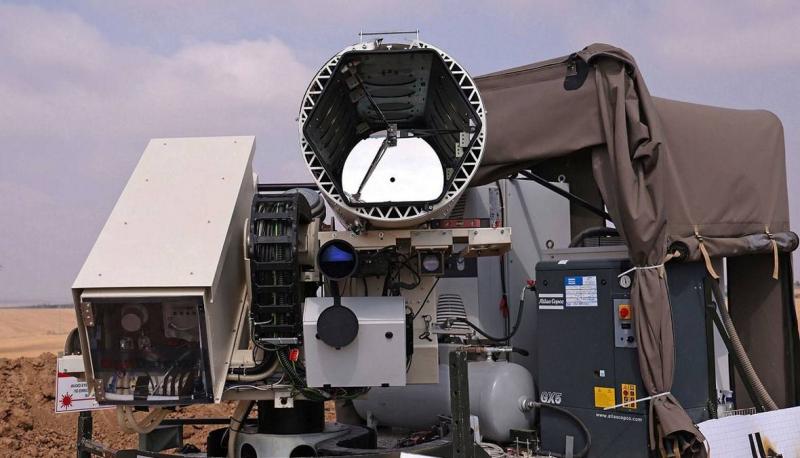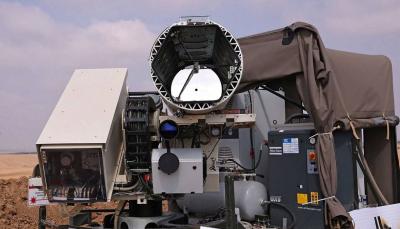As tensions escalate between Israel and Hezbollah along the Lebanese border, Israel is preparing the "Iron Beam" defense system to counter expected rockets from the group. However, it will not be able to utilize this technology if war breaks out in the foreseeable future. The Iron Beam is an air defense system that relies on laser technology to detect and destroy aerial targets such as drones. The main producer of this system is the Israeli defense company "Rafael."
The Israeli Ministry of Defense and defense industries are doing everything possible to expedite the deployment of the Iron Beam, but this will not happen before late 2025, according to a report by American magazine "Newsweek." Gideon Weiss, head of international marketing and business development at Rafael, stated that the Iron Beam system will not be ready for operational use before the end of next year.
"Newsweek" explained that the Israeli army has received the green light to adopt plans for a wide-ranging ground attack on southern Lebanon targeting Hezbollah. However, American officials told CNN that Washington has deep concerns that Israeli air defenses in the north may fail against Hezbollah in the event of a full-scale war across Israel's northern border.
Rockets and drones have been Hezbollah's primary weapons in their ongoing attacks on Israel for months. The Israeli Ministry of Defense told "Newsweek" that the government is working with Israeli arms developers to expedite "preparation of any solutions related to combat requirements and current battlefield conditions." The ministry's spokesman mentioned that "the Iron Beam system is being developed on a fast-track schedule, providing solutions for forces fighting in the field."
Regarding Israeli defenses, the Iron Beam is designed to complement the air defense umbrella rather than replace existing systems, which include the famous Iron Dome, the long-range David's Sling system, and Arrow 3. These systems have different ranges and aim to counter a variety of threats, from short-range rockets fired by Hamas to long-range Iranian ballistic missiles.
The Ministry of Defense spokesman stated: "Overall, Israel's multi-layered air defense system is one of the important national assets and plays a crucial role against any threat, including those from the north." A spokesperson for Rafael said, "Systems like the Iron Beam, which are under development, will be deployed when they can meet operational needs as effectively as possible, and they will operate alongside Iron Dome missiles to provide additional energy-based intercepting capabilities."
He added: "Regarding the arena it can be used in, whether in the north or south, the system is designed to face a range of threats targeting the Israeli home front." Israel claims that tests have shown that the Iron Beam can intercept rockets, mortars, anti-tank missiles, as well as uncrewed vehicles like drones.
In 2022, then-Israeli Prime Minister Naftali Bennett described the system as a "game changer," adding, "It may sound like science fiction, but it is real." The United States allocated $1.2 billion for the development of the Iron Beam. Bennett previously stated that each interception performed by the system would cost only about $3.50, excluding other accumulated operational costs, while some intercepting missiles of air defense systems could cost several million dollars each.




